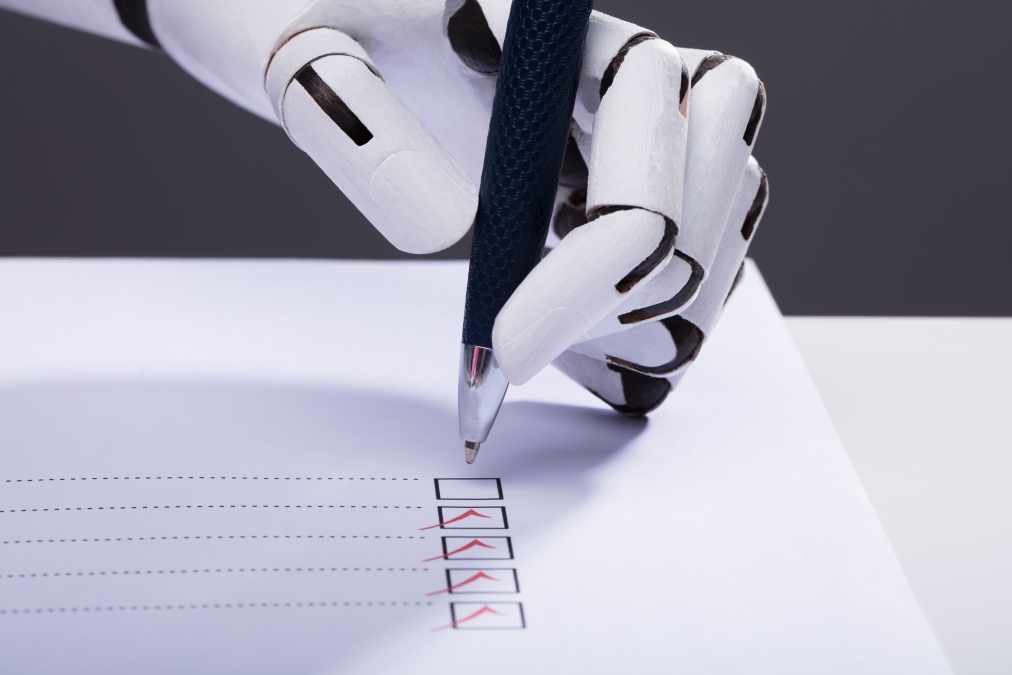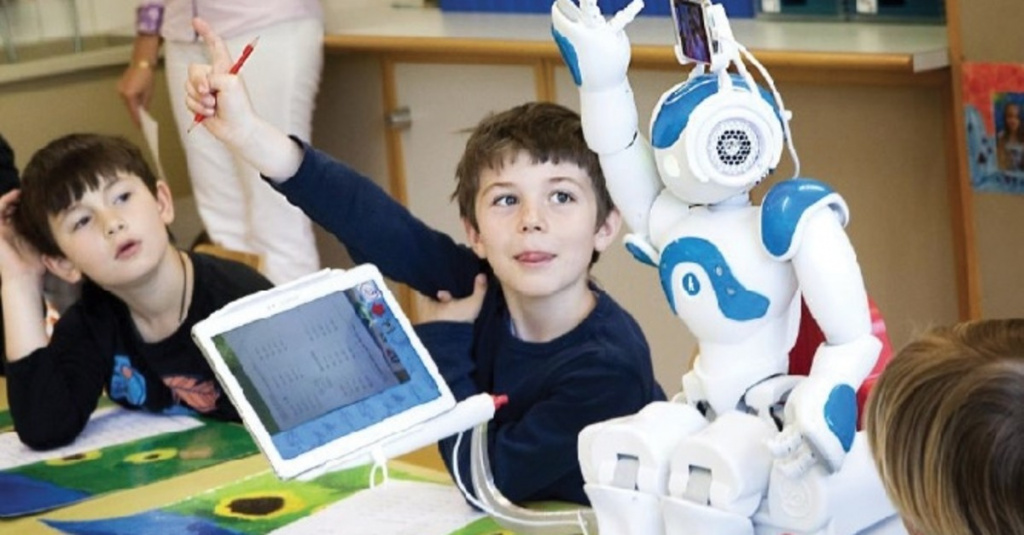
Teachers are overworked, struggling with a full teaching schedule alongside lesson planning, marking and administration. As a result, teachers leave the profession in their droves, and student progression has stalled.
While technology can help, our education system is often stuck in the past and fails to use the latest technology.
But this does not need to be the case. Instead, we need to embed new technologies like Artificial Intelligence (AI) and virtual reality that reduce teacher admin and marking burden, and improve student performance.
The problem
We’ve known for some time that teachers are overworked. A recent study by the OECD shows that full-time lower secondary teachers in England reported working, on average, nearly 50 hours a week. Some 20 per cent higher than the OCED average of 41 hours a week.
It is the same situation in our primary schools, where teachers in England work 52.1 hours a week – more than in any other country except Japan.
With most secondary school teachers teaching across multiple classes, year groups and sometimes two or three different subjects, admin and marking can build up quickly.
The same study reports that 53% of primary school teachers and 57% of lower-secondary school teachers felt that workload was unmanageable.
A poll published in April this year by the National Education Union (NEU) reflects these results. The NEU research found that nearly half of the teachers in England plan to quit within the next five years, with over 50% suggesting their workload was unmanageable.
The Guardian reported one teacher saying they are “desperate to get out of education due to workload, constant monitoring and paperwork.”
A 2018 study for the Department for Education identified marking as a specific area for concern. The report noted secondary schools had “marking policies that were not effective or beneficial to teachers or pupils.”
One secondary school science teacher said there “were ridiculous marking schemes, eight coloured pens and five symbols” which took “three hours a day to get through.”
As a result, teachers are quitting in their thousands. Vacancies are at their highest rate for more than a decade.
Official census data shows that the number of teachers leaving last year jumped by 12.4%, with 4,000 more departures in 2020-21 than in the previous year.
Even newly qualified teachers are leaving the profession. The number who left within one year increased from 11.7 per cent in 2020 to 12.5 per cent in 2021.
Overall, some 36,262 people – or eight per cent of all teachers – left the state sector.
Total vacancies jumped 42 per cent between 2020 and 2021 to 1,600. Demonstrating the difficulties with recruitment and retention, vacancies are now at their highest levels since 2010-11.
The impact
When teachers are overworked, and with many leaving the profession, student performance and progress suffer.
Anthony Seldon, the former headmaster of Wellington College, explains the implications for students. “Social mobility has largely stalled, and the school system tells a third of students they have failed,” he says.
A Social Mobility Commission report in 2018 found that the ability to achieve better pay and social position had stagnated since 2014.
In its report, the commission found that the proportion of people from working-class backgrounds with professional jobs rose only marginally, from 32 to 34 per cent, between 2014 and 2018. People from better-off backgrounds in the professions rose slightly too – from 59 per cent to 60 per cent over the same period.
So, the education system fails to help people get good jobs and improve their position.

In addition, a poll by professional services firm PwC found that most businesses felt the education system is not preparing young people for the world of work. A third say that their workforce lacks basic literacy and numeracy skills.
The impact is also beyond skills and knowledge needed for the workplace, as The Times reports that a sixth of schoolchildren are suffering from a probable mental health disorder.
The solution
So, schools must adapt to prepare children for life and work.
Schools use a wide array of technology in class, yet it is often introduced in a fragmented way without enough thought as to how teachers and students will use it.
A typical school may use PowerPoint for presentations, Teams for scheduling, interactive learning applications such as Cahoot for specific subjects, or platforms such as Google classrooms.
But a multitude of tools only adds to a teacher’s workload.
As new digital technologies and AI revolutionise the way we shop, bank, travel and communicate, it is more important than ever that the education system moves with the times.
Schoolchildren in the US use AI and virtual reality to bring lessons to life. It’s time for British classrooms to catch up.
Reducing teacher workload
From helping teaching staff to reduce their planning and administration; to automating question sets, marking and predictive grades, AI has the power to reduce the marking and admin burden for teachers.
Using AI-powered platforms to log and process learning data can help teachers automatically assesses, personalise and adapt the learning in lessons, enabling immediate intervention and real-time evaluation.
Take lesson planning, for instance. Teachers can plan lessons to tailor questions to the class and individual students, with in-lesson questioning run through an app or platform to allow teachers to check for understanding automatically and adapt lessons accordingly.
This real-time evaluation reduces the need for frequent manual marking by capturing data about where students may need more support or have gaps in their knowledge. Using the same information homework and future lesson planning can be automated and personalised. AI platforms can also help predict student grades based on data collected during the ongoing class assessment.
Reducing admin, making progress: Greenford High School – case study The school Greenford High School is a mixed 11 to 18 secondary comprehensive school in the London Borough of Ealing.
Its motto, ‘Learning to Succeed’, encapsulates the school’s vision. All pupils are on a continuous journey of learning while trying to achieve success in everything that they do. The problem Greenford is a high-performing school that achieves strong GCSE and A-Levels results for its students. Some 87% of GCSE students achieved grades 9-4 in English, 85% in Maths and 75% in Science exams. At A-level, 73% of students achieved A* to C, with a quarter achieving A* to A alone.
The school already uses devices to help with learning and teaching in class. It wanted to enhance its approach and see how AI-enabled technology could help to better plan, manage and assess students to help improve their performance while reducing teacher workload.
AI-enabled technology is not just about reducing teacher admin. It’s also about giving teachers the tools, data and time to focus on what they are best at – helping students learn.
With the app or platform becoming the facility for testing, teachers can focus on coaching students rather than just delivering the material and examining them.
Many teachers will have experiences where students, particularly in larger classes, are reluctant to speak up and ask for help.
Teachers may sometimes miss pupils who have not yet understood the topic or issue, creating future problems.
As our pilots with hundreds of teachers and thousands of students show, AI technology can help provide teachers with the information they need to see which pupils understand and which don’t.
By providing another means of communication, less confident students were more likely to ask questions and flag when they didn’t understand, improving engagement and performance in lessons.
Making learning fun: teaching French – case study
The school: La Marelle French School – The problem: Teaching Saturday French to Year 8 students.
As the class met once a week it was not always possible to know week by week how much the students were understanding.
The solution: A pilot scheme with e-spaces allowed La Marelle to utilise the platform in both lesson planning and execution, plugging in pre-prepared questions and then gauging student responses via e-spaces’ traffic light system. The impact: The teacher was surprised to learn that aspects of the lesson that she was concerned students were struggling with were understood.
This meant the focus of lesson planning could change, and the class could move onto new learning areas. Teacher – Joanna: “It was so useful to better understand what percentage of the class understood what. To have this information to hand quickly meant we could adapt our lessons and planning accordingly, moving to other parts of the lesson and even onto more fun and engaging activities. I was less reliant on my intuition because I had insightful data.”
Bringing back the joy of learning
As Anthony Seldon put it recently: “AI facilitates students thinking critically, imaginatively and for themselves, solving real-world problems, working collectively, and learning to be considerate and supportive of others.”
As we’ve seen with the pilots we’ve conducted, AI can give teachers their time back while increasing student performance.
It’s time for schools to embrace the technology that can restore the joy of teaching and learning.

Yvonne Buluma Samba is a former teacher and CEO of e-spaces (https://e-spaces.org/) an AI-enabled real time teaching and marking platform that aims to restore the joy of teaching and learning.
With a passion for business and economics, and a background working across both business and education, Yvonne is driven to modernise education, reduce workload, improve the learner experience and increase parental involvement in the education of their children.
A teacher of over 10 years, Yvonne is no stranger to the challenges facing both teachers and school managers. Her mission is focussed on tackling the growing administrative burden for teachers, alongside addressing student angst around exams and assessment
Using real time data, E-spaces automatically assesses, personalises and adapts the learning in lessons, enabling immediate intervention and real time prediction of grades in the classroom.
E-spaces is currently running pilot programmes with several schools and would welcome additional feedback from any schools or teachers interested in participating.
E-spaces won E-Learning Platform of the Year at the Corporate Live-wire Awards 2022.
Contact:
www.e-spaces.org
Email: ybuluma@greenonlinespaces.org
60 Wilson Street, London, EC2A 2BB
0203 026 5192
Register for free
No Credit Card required
- Register for free
- Free TeachingTimes Report every month